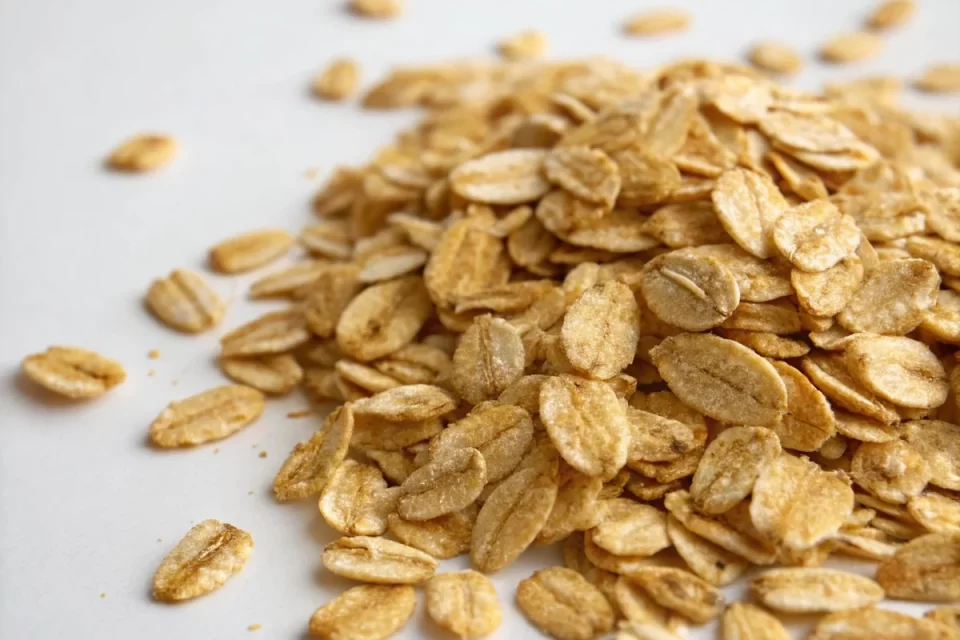Oats (Avena sativa), a hearty whole grain, are celebrated for their versatility, nutty flavor, and exceptional nutritional benefits. A staple in many diets, oats are used in porridges, baked goods, and modern health foods, offering both culinary flexibility and health advantages. This article explores oats’ historical role in food, their nutritional profile, evidence-based health benefits, practical tips for use, and complementary food pairings, supported by scientific research.
History of Oats in Culinary Traditions
Oats have been cultivated for over 4,000 years, originating in the Near East and spreading to Europe by the Bronze Age (circa 2000 BCE). Initially considered a weed, oats became a dietary staple in cooler climates, particularly in Scotland, where they were used in porridge and oatcakes by the Middle Ages. In 19th-century Europe, oats were a key ingredient in gruels and breads, valued for their affordability and nutrition. In North America, oats gained popularity with the rise of rolled oats, introduced by Quaker Oats in the late 1800s, leading to their use in breakfast cereals and cookies. Today, oats are a global ingredient, featured in Scottish haggis, American granola bars, and Indian oat-based curries, showcasing their adaptability across cuisines.
Nutritional Profile
Oats are nutrient-dense, offering a balance of fiber, protein, and micronutrients. Per 100 grams (approximately 1 cup dry rolled oats):
- Calories: 379 kcal
- Protein: 13.2g
- Fat: 6.9g (1.3g saturated, 2.5g monounsaturated, 2.3g polyunsaturated)
- Carbohydrates: 66.3g (10.6g fiber, 1g sugars)
- Vitamins and Minerals:
- Manganese: 4.9mg (245% Daily Value)
- Phosphorus: 523mg (52% DV)
- Magnesium: 177mg (42% DV)
- Iron: 4.7mg (26% DV)
- Zinc: 3.6mg (24% DV)
- Vitamin B1 (Thiamin): 0.8mg (53% DV)
Oats contain bioactive compounds like beta-glucans (soluble fiber), avenanthramides (antioxidants), and phenolic compounds, contributing to their health benefits.
Note: Nutritional values are based on USDA data for rolled oats. Values may vary slightly depending on processing (e.g., steel-cut vs. instant) or preparation (e.g., cooked with water vs. milk).
Health Benefits
Oats’ health benefits are driven by their fiber, antioxidants, and nutrient density, supported by scientific research. Below are key benefits:
- Heart Health: Beta-glucans in oats reduce LDL cholesterol. A meta-analysis in The American Journal of Clinical Nutrition (2016) found that oat consumption lowered LDL cholesterol by 7–12 mg/dL, reducing cardiovascular risk.
- Blood Sugar Control: Beta-glucans slow glucose absorption, stabilizing blood sugar. A study in Nutrients (2015) showed that oats improved insulin sensitivity and reduced post-meal glucose spikes in type 2 diabetes patients.
- Digestive Health: High fiber content promotes regular bowel movements and gut health. Research in British Journal of Nutrition (2014) linked oat fiber to increased gut microbiota diversity and reduced constipation.
- Weight Management: Oats’ fiber and protein promote satiety. A study in European Journal of Clinical Nutrition (2013) found that oat-based meals increased feelings of fullness, aiding weight control.
- Antioxidant Support: Avenanthramides in oats combat oxidative stress. A study in Journal of Nutrition (2011) demonstrated that oat antioxidants reduced inflammation markers in adults.
Note: Benefits are maximized with whole or minimally processed oats (e.g., steel-cut or rolled vs. instant). Those with gluten sensitivities should choose certified gluten-free oats due to potential cross-contamination. Limit added sugars in preparations to maintain health benefits.
Tips for Using Oats
- Selection: Choose whole or rolled oats for maximum nutrition; steel-cut oats offer a chewier texture, while instant oats cook faster but may have lower fiber.
- Storage: Store dry oats in an airtight container in a cool, dry place for up to 1 year. Cooked oats can be refrigerated for 3–4 days.
- Preparation: Cook rolled oats with water or milk (1:2 ratio) for 5–10 minutes; steel-cut oats require 20–30 minutes. Soak overnight for quicker cooking or a creamier texture.
- Cooking: Use oats in porridge, baking, or savory dishes like oat risottos. Avoid overcooking to preserve nutrients.
- Gluten-Free Option: Select certified gluten-free oats for those with celiac disease or gluten sensitivity.
- Versatility: Blend oats into smoothies for added fiber, use oat flour in baking, or incorporate into savory dishes for texture.
Food Pairings for Oats
Oats’ nutty flavor and hearty texture pair well with a variety of ingredients, enhancing both taste and nutrition. Below are five healthy combinations:
- Oats + Blueberries + Greek Yogurt: Mix cooked oats with blueberries and a dollop of Greek yogurt for a protein-rich breakfast high in antioxidants and probiotics.
- Oats + Spinach + Garlic: Combine oats with sautéed spinach and garlic for a savory porridge rich in iron and vitamin K.
- Oats + Banana + Almond Butter: Top oatmeal with sliced banana and a teaspoon of almond butter for a fiber-packed meal with healthy fats and potassium.
- Oats + Pumpkin + Cinnamon: Blend cooked oats with pumpkin puree and cinnamon for a nutrient-dense dish high in vitamin A and fiber.
- Oats + Chickpeas + Curry Spices: Use oats as a base for a savory curry with chickpeas and spices for a protein- and fiber-rich meal.
Scientific and Academic Support
Oats’ benefits are backed by peer-reviewed research:
- Ho, H. V., et al. (2016). The American Journal of Clinical Nutrition: Oats’ effects彼此
System: effects on cholesterol reduction.
- Tosh, S. M., et al. (2015). Nutrients: Oats’ impact on insulin sensitivity and blood sugar control.
- Whitehead, A., et al. (2014). British Journal of Nutrition: Oat fiber’s role in gut health.
- Kristensen, M., et al. (2013). European Journal of Clinical Nutrition: Oats’ effects on satiety and weight management.
- Liu, S., et al. (2011). Journal of Nutrition: Avenanthramides’ anti-inflammatory properties.
These studies confirm oats’ potential to support heart health, blood sugar regulation, and digestion, though further research is needed for long-term effects and optimal intake.

